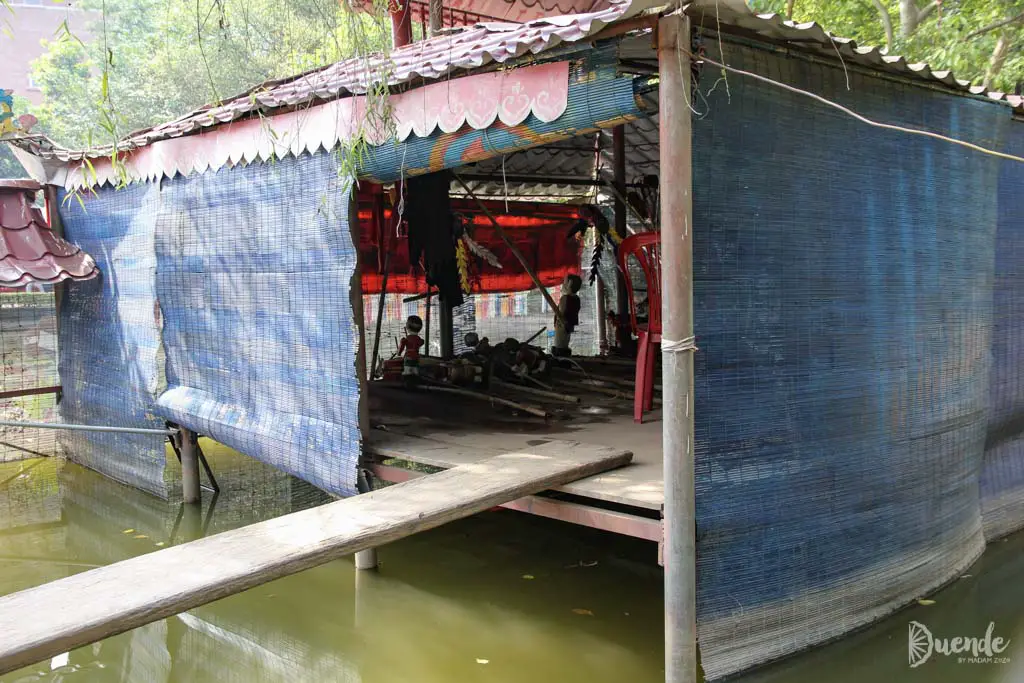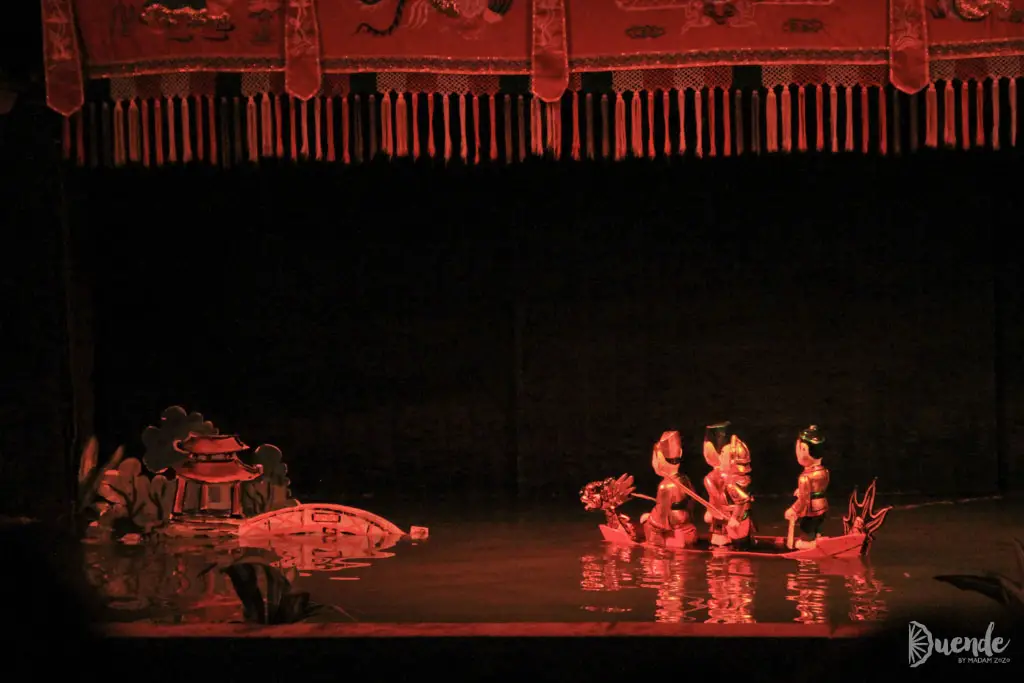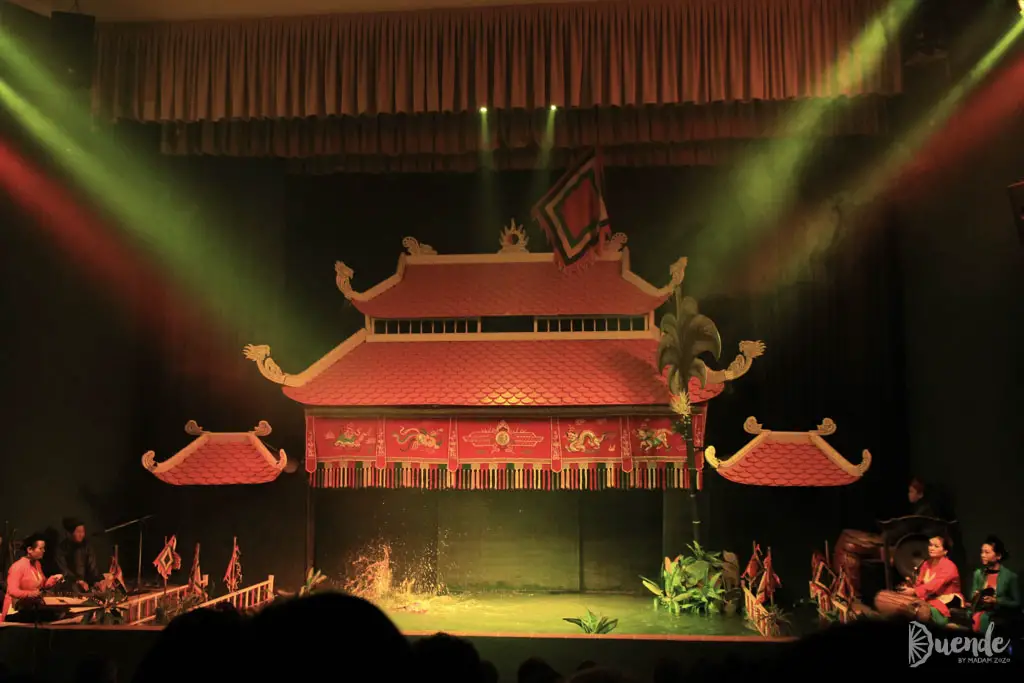You’ve seen Disney on Ice, how about puppets on water? Vietnamese water puppets are an ancient art originating on the rice paddies of North Vietnam. To this day, the unique form of theatre can generally only be experienced in this corner of the world. I rugged up for a cold evening in the park where I thought I was going to take in my first water puppet experience in Hanoi. Though I had no concept of what a water puppet show would be like, I knew it was traditionally an outdoor activity and was expecting to be sitting in the chilly winter night air. I was relieved to find out that we were going to see the show from the inside of a heated theatre.
Setting the stage
The art of Vietnamese water puppets originated in the rice-growing regions of northern Vietnam, such as the Red River Delta. Hand-carved, wooden puppets perform on a fluid stage controlled by puppeteers hidden behind a screen. The puppets controlled by a variety of devices hidden beneath the murky water’s surface, to create the theatrical illusion of puppets without strings.
How do water puppets work?
Traditionally a water puppet stage would have been a waist-deep pond, river or flooded rice field. A structure was built to hide performers and create a backdrop to the show made to look like a pagoda or communal house. These have evolved over time to water tanks located permanently in specialist theatres and portable tanks used by touring puppet troupes. The water provides a dynamic play surface with which the puppets can appear and disappear, splash and even be enhanced with fiery effects. The water also reflects the theatrical lighting, adding to the magic of the scene.
Puppet production
Puppets are hand-carved, usually from the wood of fig trees which are abundant in Vietnam. The lacquer tree’s resin is used to varnish the wood and make it water-resistant. The puppets can weigh up to 15kg and are 30-100cm (12-40inches) in height. They are generally controlled using a combination of bamboo poles and strings.



Words & music
The show is accompanied by musicians and singers that perform a type of opera called chèo, which narrates the story being acted by the puppets. The musicians interact with the puppets by yelling words of warning or encouragement, adding to the drama, as would the audience in a traditional setting.
The stories of Vietnamese water puppetry are those of local folklore. They reflect the daily living of the art form’s originators who were farmers living in rural villages. Stories reflect cultural values, folk religion and celebrations such as harvest festivals. The Vietnamese like a fairytale ending with the good guy generally emerging triumphant.
A brief history of Vietnamese water puppets
The history of water puppetry is largely undocumented and disputed. The earliest known record of the art is the inscription on a stone slab located in Đọi Sơn Pagoda roughly 50km from Hanoi. The inscription describes the entertainment at the birthday part of a king in 1121CE: “A golden tortoise with three mountains on its shell was seen on the rippling surface of the water. It showed both its shell and four legs… the cavern’s entrance opened and fairies in the play appeared…Flocks of precious birds and herds of animals sang and danced…” This is a scene from The Legend of the Restored Sword, a popular narrative used in water puppet shows.
Back in my warm seat of the Thang Long Water Puppet Theatre in Hanoi, I was charmed by the unique performance! Unfortunately, the musicians seemed unenthusiastic, even bored by the monotony of playing another show, for an audience with little or no understanding of the story. Although the traditional language, folklore and music are important to retain as part of the overall authenticity of the art, I feel that there could be a much greater appreciation generated by providing the audience with a simple English translation of the story.
My personal appreciation for traditional Asian music is limited, however, I would absolutely recommend taking in the spectacle of Vietnamese water puppets at least once. While I couldn’t necessarily follow the story, the novelty of the show was captivating and an essential ingredient to discovering Vietnam.
Peace, love & inspiring travel,
Madam ZoZo

